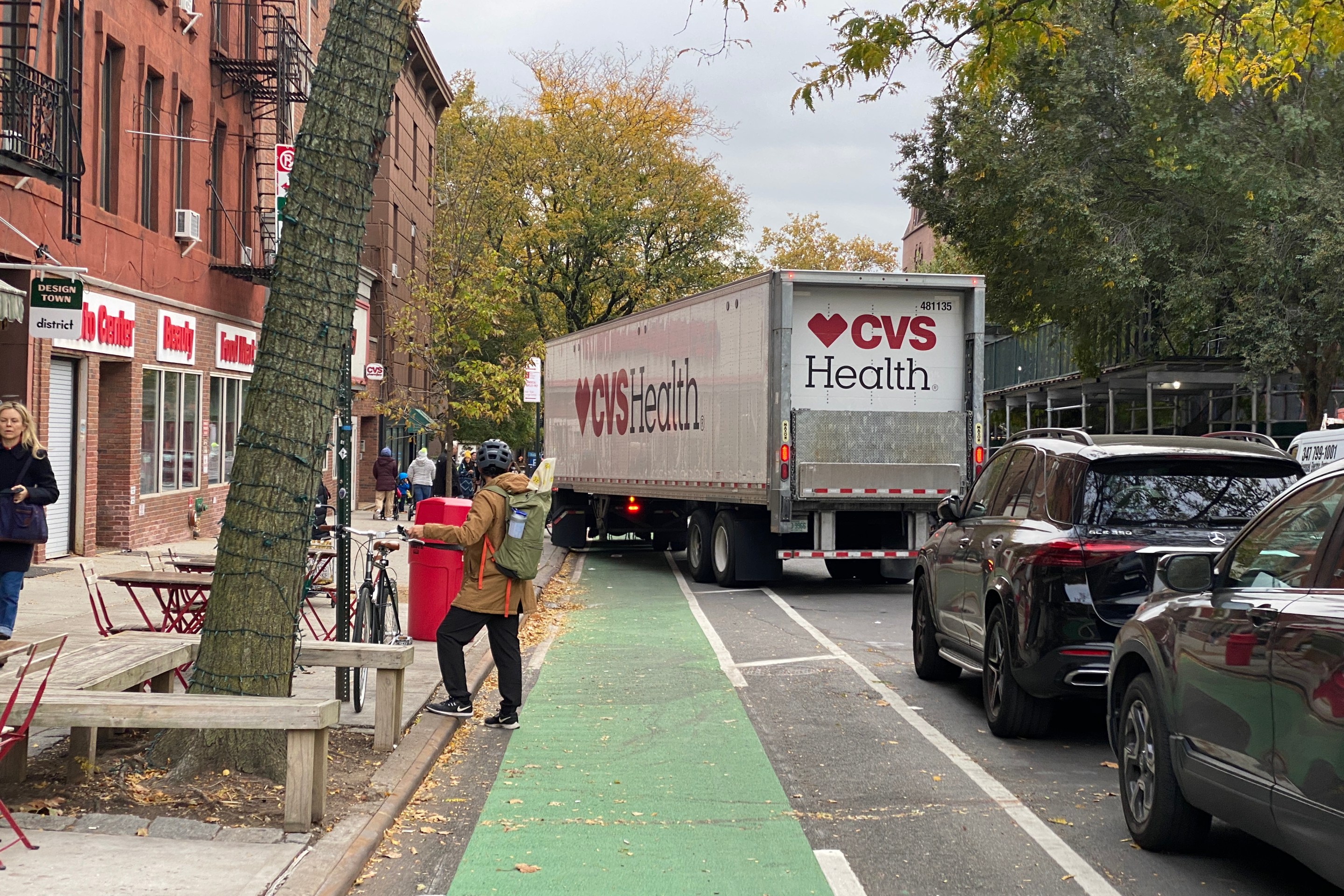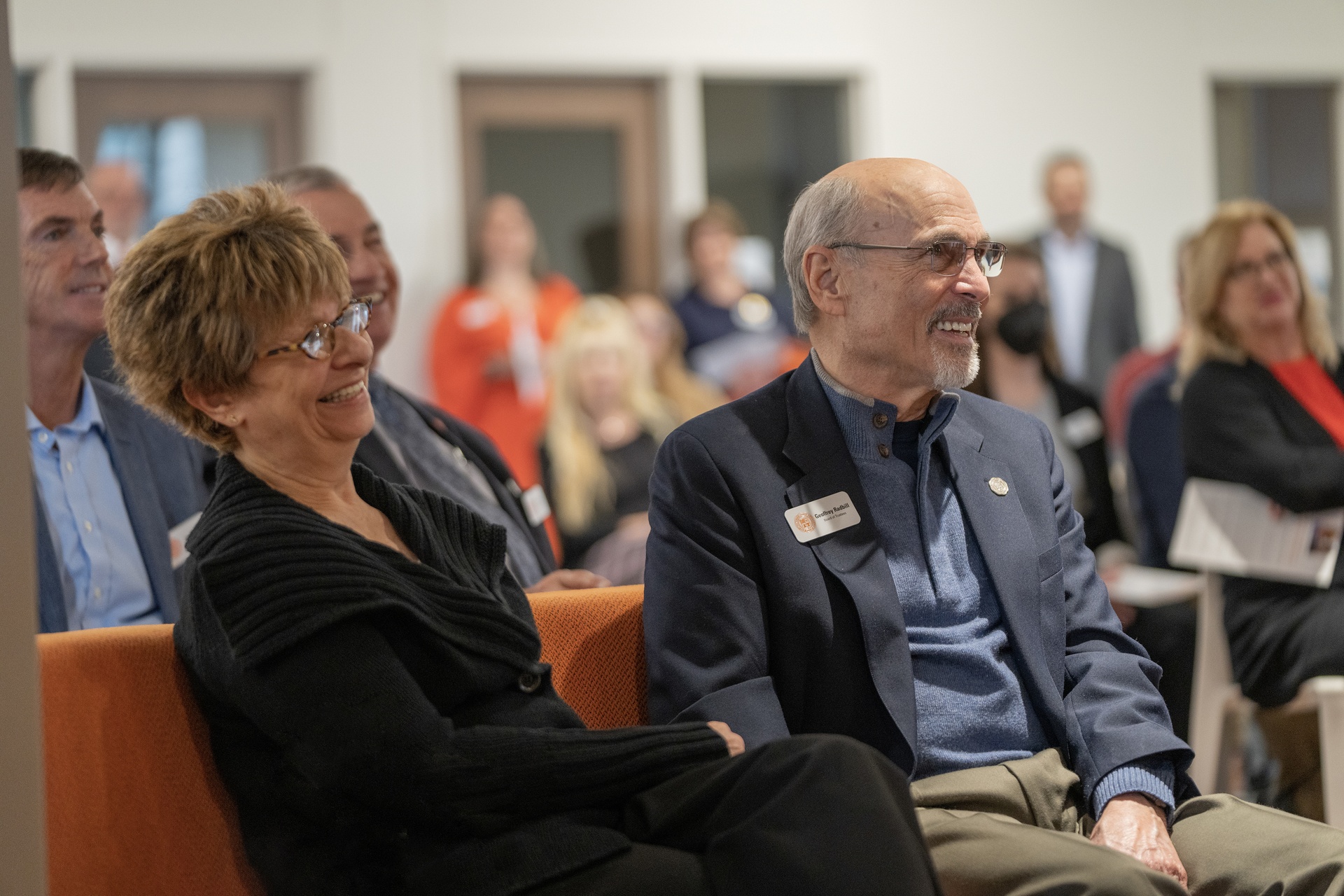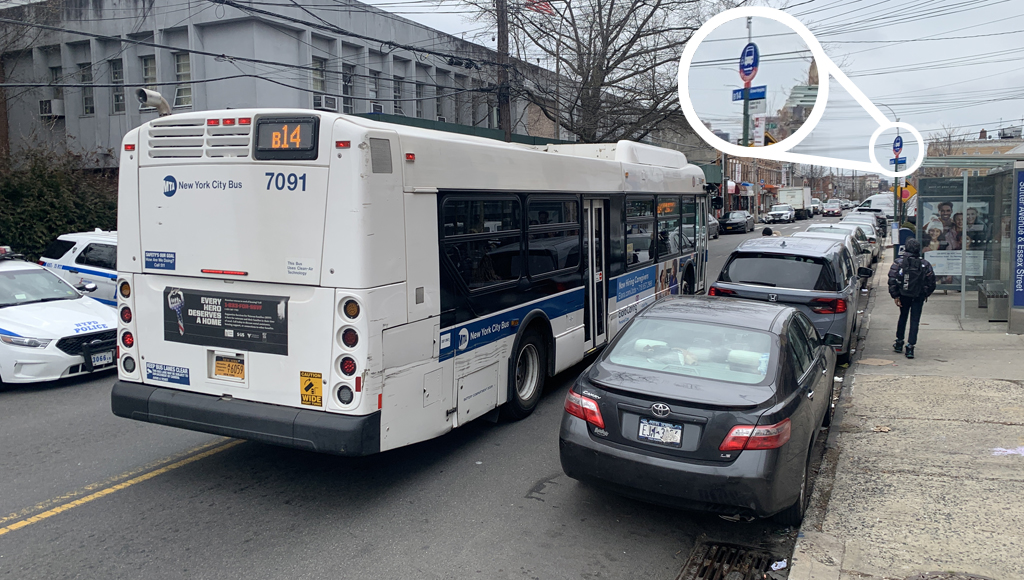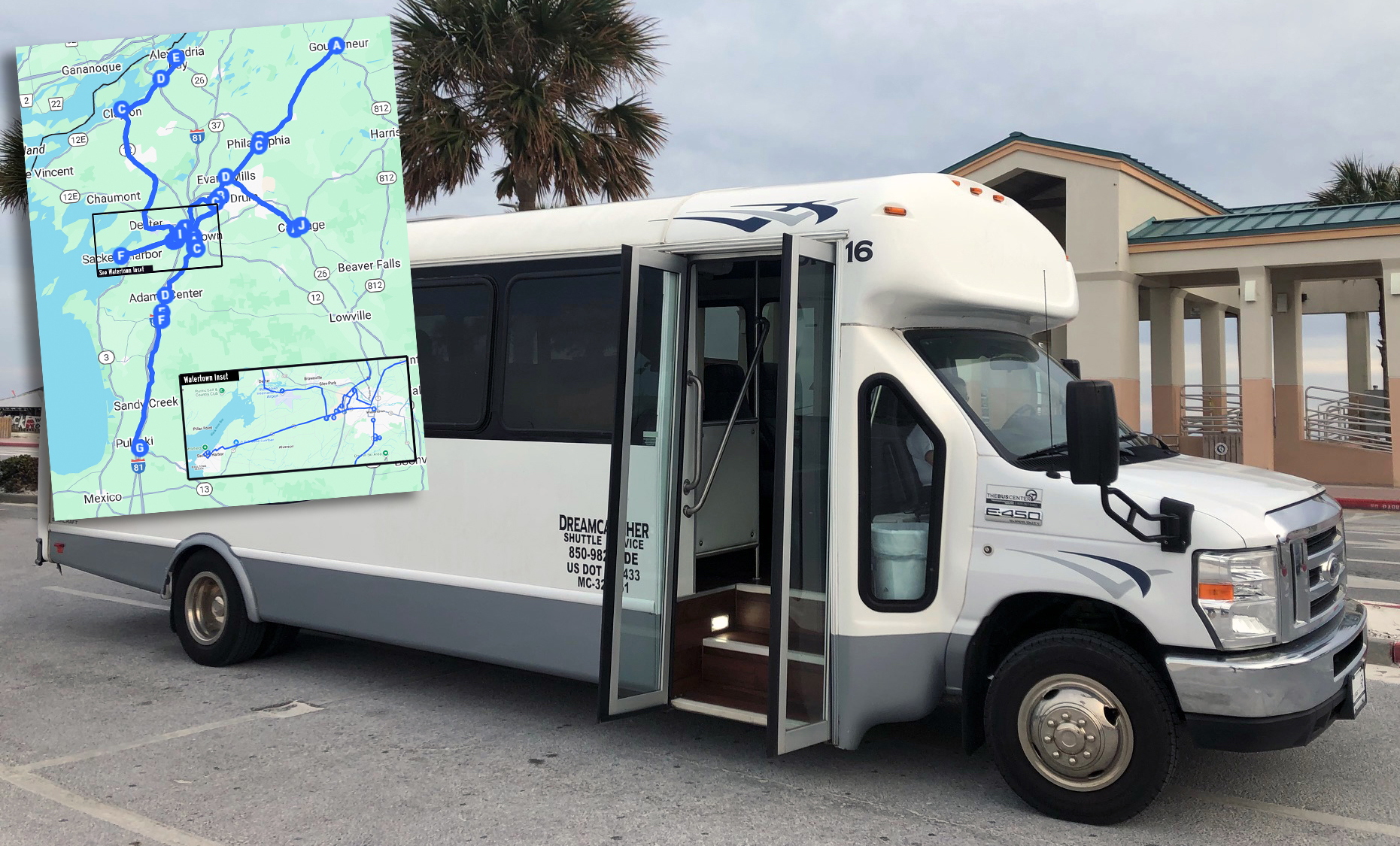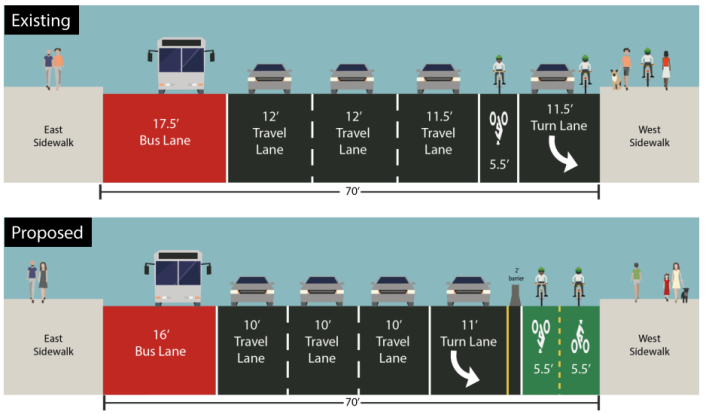
On Tuesday, DOT presented plans to Manhattan Community Board 11 for two short segments of two-way protected bike lanes to improve connections between East Harlem and the Willis Avenue and Triborough bridges [PDF].
Both bridges link the South Bronx and Upper Manhattan, but the current connections to the Manhattan bike network don't work well.

To get to Second Avenue, cyclists coming from Willis Avenue are expected to use 125th Street, where they must contend with cars coming from six different directions at the intersection with the Triborough ramps. Similarly, no safe route exists for cyclists hoping to get from the northbound lane on First Avenue to either bridge.
Those conditions lead cyclists to seek safer routes that violate the letter of the law. According to DOT, 40 percent of cyclists on First Avenue between 125th and 124th travel against northbound traffic. In the last few years, cyclists have been injured at all four intersections of 125th and 124th with First and Second.
DOT's plan calls for a barrier-protected two-way bike lane on First between 125th and 124th and a parking-protected two-way lane on 124th Street between First and Second. This will create safer connections for southbound cyclists from Willis Avenue and northbound cyclists heading to the Triborough, especially.
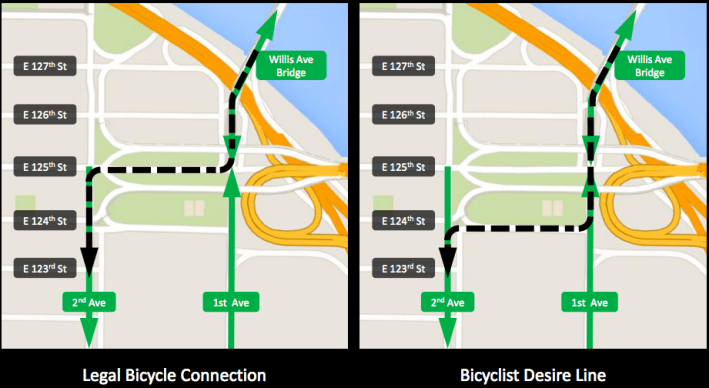
The project also includes a new mid-block pedestrian crossing on 124th Street between First and Second.
Conditions on the streets leading to most Harlem River bridges leave a lot to be desired for walking and biking. Following the lead of advocates, last year DOT launched an initiative to improve biking and walking access to the Harlem River bridges and held several public events to collect ideas.
The new bikeway segments will get a vote at the CB 11 transportation committee on March 1, and are expected to go to the full board on March 15.


